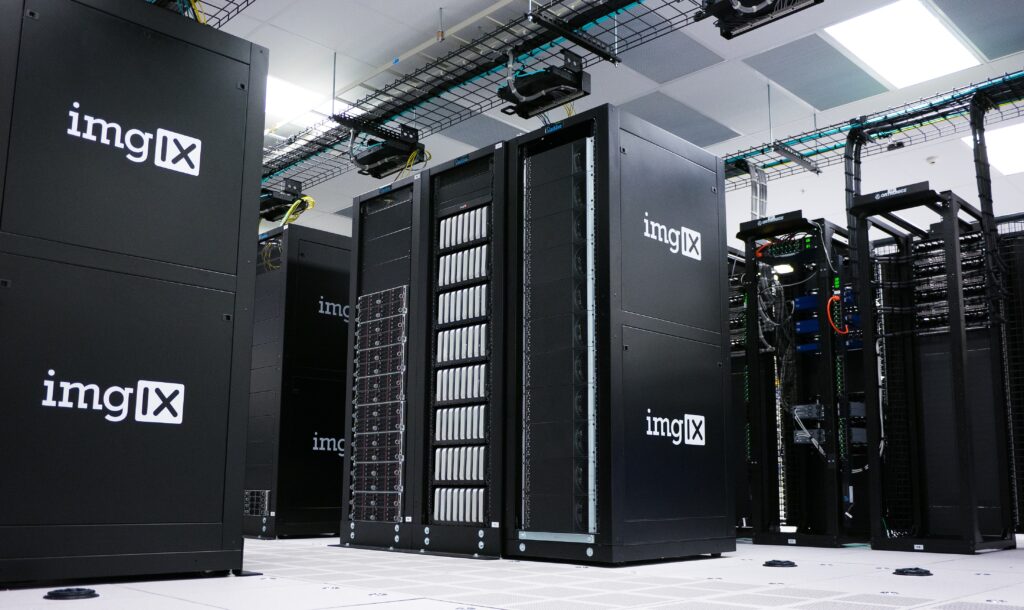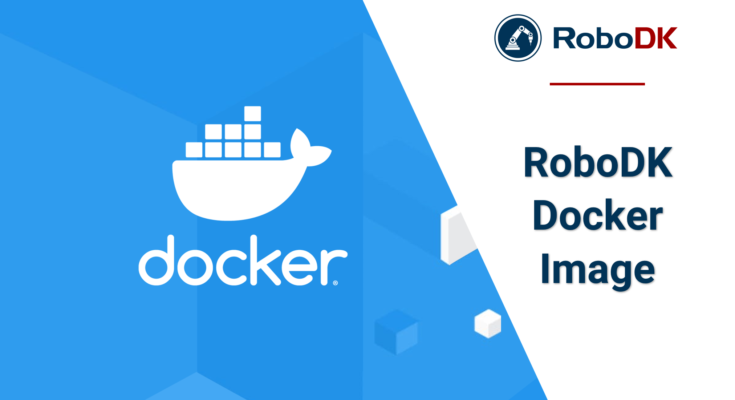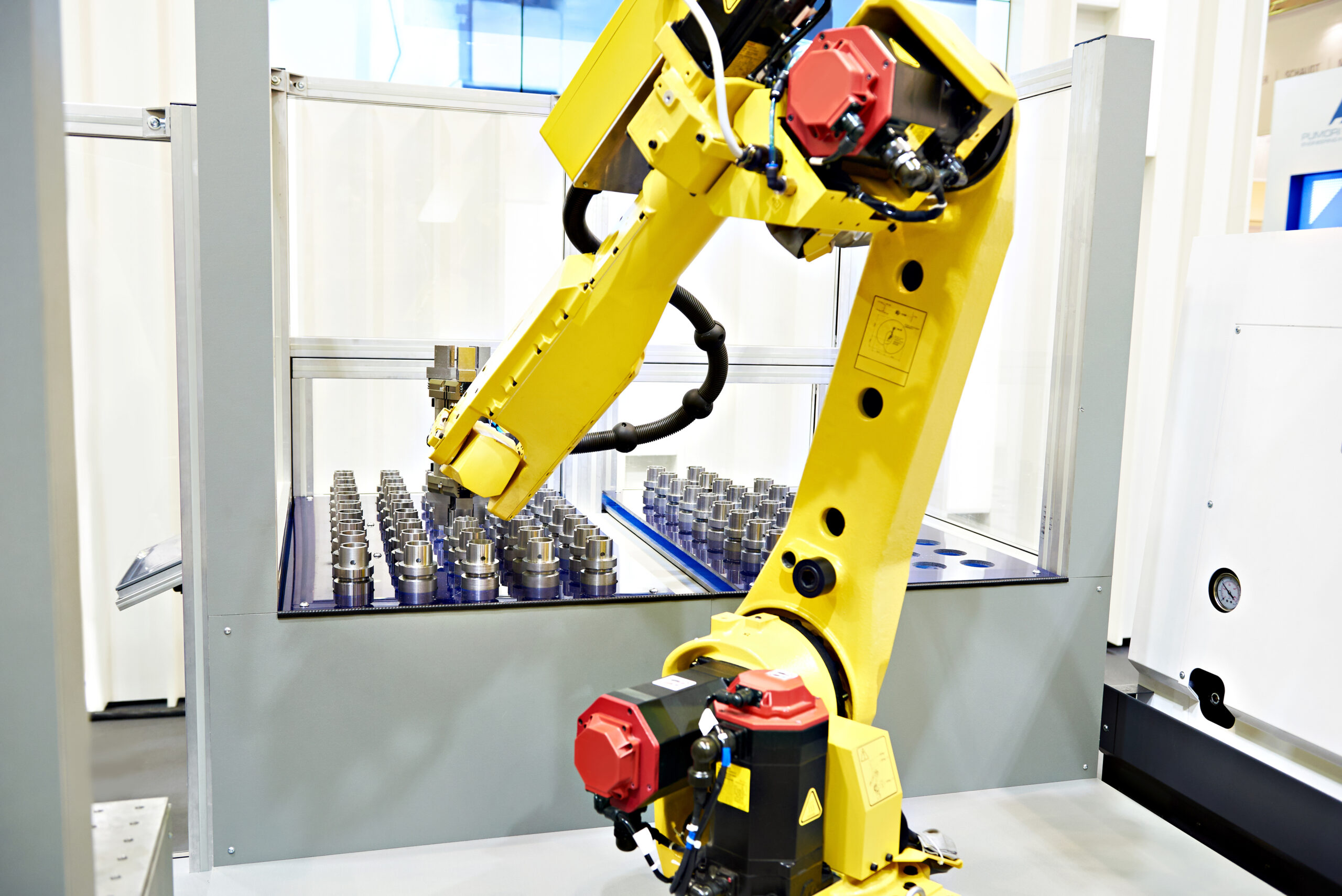Do you want to access the more advanced features of RoboDK and its API? The new Docker image could make your life a lot easier.
One common challenge when you want to use more advanced robot programming functions is getting your head around all the installation requirements for each different operating system (RoboDK supports many of them).
With the new RoboDK Docker image, you can access the more advanced functionality of the software simply by pulling the image from Docker Hub and running it in a container.
This new image makes it even easier to get started with the more advanced programming and simulation of industrial robots. You can use it to deploy RoboDK on your own servers or in the cloud.
Here’s an introduction to the new RoboDK Docker image.
What is Docker?
Docker is an open-source platform for developing, sharing, and running applications.
Docker is helpful for developers as it enables them to package up an application with all the required components, including libraries and other dependencies. You can then ship the whole application as a single package.
One advantage of Docker is that it can create virtual environments known as “containers” which act as isolated environments. With these, you can run multiple applications on the same computer or server without them interfering with each other.
When you run a Docker application, it will install and configure all the required dependencies. This makes it much easier to get applications up and running.

Welcome to the New RoboDK Docker Image
We recently released our new RoboDK Docker Image, which is now available on Docker Hub.
This new format opens up new possibilities for using RoboDK, including integrating functionality into continuous deployment workflows, using features as microservices, and deploying full robot programming applications safely in any environment.
This image makes it easier to get started using the RoboDK API — our richly featured programming interface for more advanced robot programming and simulation.
Why have we added this new feature to RoboDK?
As with many of our updates and new features, the Docker image first came as a suggestion from one of our users. In this case, user robotguy on the RoboDK Forum asked us whether it was possible to install RoboDK as a Docker image…
At the time, it wasn’t possible, but now it is!
What Are the Benefits of Using RoboDK with Docker?
There are several benefits that you can gain when you use RoboDK with Docker.
For one thing, the new image makes it much easier to get started with RoboDK API programming than it was before.
You don’t need to worry about installing the right version of RoboDK and its dependencies. And there’s no chance of the RoboDK dependencies interfering with other programs on your computer. The entire program is installed in an isolated Docker container.
The new image also opens up more use cases for RoboDK to everyone.
7 Prominent Features of the RoboDK Docker Image
Here are 7 great features that you can access by using the new RoboDK Docker image. These are just the tip of the iceberg — once you become familiar with the possibilities, you will probably think of many more options.
1. Run RoboDK Features As Microservices
Microservice architectures are based around applications running as small, independent services that you can develop, deploy, and maintain independently.
The RoboDK Docker image allows you to use RoboDK features — such as robot simulation, collision checking, and offline programming — as microservices.
2. Integrate with Continuous Delivery Workflows
Continuous integration (CI) and continuous delivery (CD) are development methodologies that introduce automation into your development workflow. They make it easier to get new features and updates out to your users.
3. Easily Deploy RoboDK in Any Environment
A great benefit of Docker images is that they allow you to deploy your applications in any environment, including on your own servers or in the cloud.
This flexibility means you can access RoboDK’s powerful features in many more environments.

4. Support Kubernetes
Kubernetes is an open-source system for automating the deployment, scaling, and management of containerized applications (such as those you can create with Docker).
The RoboDK Docker image now means we have support for Kubernetes, opening up more automation options for your robot application deployment.
5. Run Simultaneous Instances of RoboDK
Thanks to the Docker containers, you can now run multiple instances of RoboDK on the same machine, without them interfering with each other.
This is ideal when you need to run multiple robot programs completely independently. It also helps avoid potential conflicts or downtime that could occur when you are using different versions of RoboDK simultaneously.
6. Dynamically Start and Stop Instances
With the new Docker image, you can now dynamically start and stop instances of RoboDK as needed.
This feature makes it much easier for you to use RoboDK and its functionalities as a service in your environment.
7. Run RoboDK API Remotely
Another interesting possibility of the Docker image is that you can run instances of the RoboDK API remotely.
This means you can develop your application on one machine and deploy it on another, without having to install RoboDK on the target machine.

How to Get Started with RoboDK via Docker
It’s very easy to get started with the new RoboDK Docker image.
Just install Docker, then run the few simple commands on the RoboDK Docker image page on Docker Hub.
What applications can you think of for the Docker image? Tell us in the comments below or join the discussion on LinkedIn, Twitter, Facebook, Instagram, or in the RoboDK Forum.. Also, check out our extensive video collection and subscribe to the RoboDK YouTube Channel




